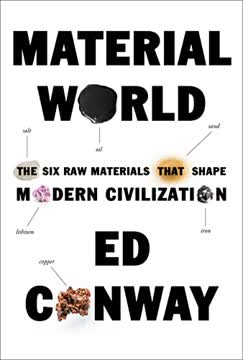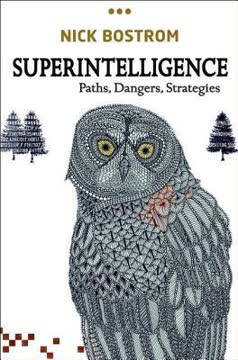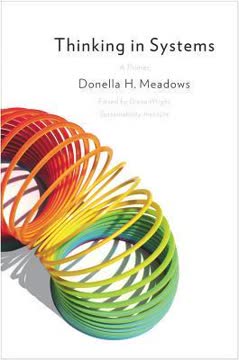Points clés
1. La technologie est une programmation des phénomènes naturels
Une technologie est un phénomène capturé et mis à profit.
Les blocs de construction de la nature. Au cœur de la technologie se trouve l'orchestration des phénomènes naturels pour atteindre des objectifs humains. De l'utilisation simple du feu pour cuisiner à la manipulation complexe des effets quantiques dans l'électronique moderne, toutes les technologies exploitent un ou plusieurs effets trouvés dans la nature. Ce principe fondamental explique pourquoi le progrès technologique est si étroitement lié à la compréhension scientifique – à mesure que nous découvrons de nouveaux phénomènes, nous acquérons de nouveaux outils pour créer des technologies.
Couches de complexité. Les technologies utilisent rarement les phénomènes sous leur forme brute. Au lieu de cela, elles combinent plusieurs effets, souvent de manière complexe, pour atteindre leur objectif. Par exemple, un smartphone moderne utilise des ondes électromagnétiques pour la communication, le tunnelage quantique dans les transistors pour le traitement, et l'électrochimie dans les batteries pour l'alimentation. Cette superposition de phénomènes permet des technologies de plus en plus sophistiquées et capables.
- Exemples de phénomènes exploités :
- La chaleur pour la cuisine et la métallurgie
- Les ondes électromagnétiques pour la communication
- Les réactions chimiques pour la médecine et les matériaux
- Les effets quantiques pour l'informatique
2. Toutes les technologies sont des combinaisons d'éléments existants
Les nouvelles technologies sont créées à partir de blocs de construction qui sont eux-mêmes des technologies, et deviennent des blocs de construction potentiels pour la construction de nouvelles technologies.
Structure récursive. Les technologies ne sont pas des inventions autonomes mais des combinaisons de composants existants, qui sont eux-mêmes des technologies. Cette nature récursive signifie que même les dispositifs les plus complexes peuvent être décomposés en parties plus simples, chacune avec son propre but et sa fonction. Comprendre cette structure est crucial pour l'innovation et la résolution de problèmes en technologie.
Innovation par recombinaison. La nature combinatoire de la technologie explique pourquoi l'innovation provient souvent de la réunion d'idées ou de composants de différents domaines. Elle suggère également qu'à mesure que le nombre de technologies existantes augmente, le potentiel de nouvelles combinaisons – et donc de nouvelles innovations – augmente de manière exponentielle. Ce principe sous-tend le rythme accéléré du changement technologique que nous observons dans le monde moderne.
- Implications clés :
- Chaque nouvelle technologie ouvre des possibilités pour de futures innovations
- La connaissance interdisciplinaire peut mener à des percées
- Le potentiel d'innovation croît avec le progrès technologique
3. Domaines : Corps de technologie qui façonnent les possibilités
Un domaine sera tout ensemble de composants utilisés pour former des dispositifs ou des méthodes, avec sa collection de pratiques et de connaissances, ses règles de combinaison et sa manière de penser associée.
Écosystèmes technologiques. Les domaines ne sont pas seulement des collections de technologies connexes, mais des écosystèmes entiers de connaissances, de pratiques et de possibilités. Ils façonnent la manière dont les ingénieurs et les inventeurs pensent aux problèmes et aux solutions dans leur domaine. Comprendre les domaines est crucial pour saisir comment la technologie évolue et pourquoi certaines innovations émergent à un moment donné.
Redomaining comme innovation. Certaines des avancées technologiques les plus significatives ne proviennent pas de l'amélioration des technologies existantes, mais du redomaining – l'application de principes ou de composants d'un domaine pour résoudre des problèmes dans un autre. Ce processus peut conduire à des changements révolutionnaires, ouvrant des possibilités entièrement nouvelles qui étaient auparavant inimaginables.
- Exemples de domaines technologiques :
- Électronique
- Biotechnologie
- Science des matériaux
- Technologie de l'information
- Impact des domaines :
- Définir le "possible" à une époque donnée
- Façonner les industries et les structures économiques
- Influencer les approches de résolution de problèmes
4. Le processus d'invention : lier les besoins aux effets
L'invention consiste à lier un besoin à un effet pour satisfaire ce besoin.
Appariement problème-solution. L'invention n'est pas un processus mystérieux de génie, mais une liaison systématique des besoins identifiés avec des solutions potentielles basées sur des effets ou des phénomènes connus. Cette compréhension démystifie l'innovation et suggère des moyens de la favoriser plus efficacement.
Résolution de problèmes récursive. Le processus d'invention est souvent récursif, chaque solution potentielle révélant de nouveaux défis à relever. Cette nature itérative explique pourquoi les inventions significatives prennent souvent des années de développement et de raffinement avant de devenir pratiques.
- Étapes clés de l'invention :
- Identifier un besoin ou un problème
- Reconnaître les effets ou phénomènes potentiels pouvant répondre au besoin
- Conceptualiser un principe qui lie le besoin et l'effet
- Développer des mises en œuvre pratiques du principe
- Affiner et optimiser la solution
5. Profondeur structurelle : comment les technologies deviennent plus complexes
En ajoutant des sous-systèmes pour contourner ces limitations, les technologies s'élaborent à mesure qu'elles évoluent. Elles ajoutent de la "profondeur" ou de la sophistication de conception à leurs structures.
Évolution par complication. À mesure que les technologies mûrissent, elles deviennent souvent plus complexes plutôt que plus simples. Ce processus, appelé approfondissement structurel, se produit lorsque les ingénieurs ajoutent des sous-systèmes pour surmonter les limitations, améliorer les performances ou étendre les fonctionnalités. Comprendre cette tendance aide à expliquer pourquoi les technologies matures peuvent être difficiles à remplacer, même lorsque des alternatives plus simples émergent.
Compromis performance-complexité. L'approfondissement structurel permet aux technologies d'atteindre des performances plus élevées ou des capacités plus larges, mais au prix d'une complexité accrue. Ce compromis peut créer des opportunités pour des innovations perturbatrices qui offrent des solutions plus simples aux problèmes de base, potentiellement en remplaçant les technologies plus complexes en place.
- Raisons de l'approfondissement structurel :
- Surmonter les limitations de performance
- S'adapter à des conditions variées
- Améliorer la sécurité et la fiabilité
- Étendre les fonctionnalités
- Exemples :
- Les moteurs d'avion devenant plus sophistiqués au fil du temps
- Les smartphones intégrant de plus en plus de capteurs et de fonctionnalités
6. Évolution combinatoire : la technologie se crée elle-même
La technologie se crée elle-même à partir d'elle-même.
Progrès auto-générateur. L'évolution de la technologie est un processus auto-renforçant. Les nouvelles technologies deviennent des blocs de construction pour de futures innovations, créant un ensemble de possibilités en constante expansion. Ce principe explique le rythme accéléré du changement technologique et suggère que le potentiel d'innovation croît de manière exponentielle au fil du temps.
Développement non linéaire. Le progrès technologique n'est pas lisse ni prévisible. Au lieu de cela, il progresse souvent par à-coups, avec des périodes d'avancement rapide suivies de consolidation. Ce schéma émerge de la nature combinatoire de l'innovation, où une seule percée peut débloquer de multiples nouvelles possibilités.
- Aspects clés de l'évolution combinatoire :
- Les technologies existantes servent de blocs de construction pour de nouvelles
- Le potentiel d'innovation croît avec le nombre de technologies existantes
- Le progrès peut être imprévisible et non linéaire
- Implications :
- La prévision technologique à long terme est intrinsèquement difficile
- La connaissance interdisciplinaire devient de plus en plus précieuse
- Le rythme du changement est susceptible de continuer à s'accélérer
7. L'économie comme expression de ses technologies
L'économie est une expression de ses technologies.
La technologie façonne les structures économiques. Plutôt que de voir l'économie comme un contenant pour les technologies, nous devrions la comprendre comme étant fondamentalement façonnée par les technologies qu'elle englobe. Cette perspective aide à expliquer pourquoi les révolutions technologiques entraînent des changements économiques et sociaux profonds.
Changement structurel économique. À mesure que de nouvelles technologies émergent et se répandent, elles n'améliorent pas seulement l'efficacité au sein des structures économiques existantes. Au lieu de cela, elles nécessitent et créent souvent des arrangements entièrement nouveaux, des modèles commerciaux aux cadres réglementaires. Ce processus de changement structurel est essentiel pour comprendre le développement économique à long terme.
- Façons dont la technologie façonne l'économie :
- Définit les produits et services possibles
- Influence les structures organisationnelles et les modèles commerciaux
- Façonne les marchés du travail et les exigences en matière de compétences
- Conduit à la création de nouvelles industries et au déclin d'autres
- Exemples de changement économique induit par la technologie :
- L'industrialisation et la montée des usines
- La transformation numérique et l'économie des plateformes
8. Le paradoxe de la technologie : espoir et malaise dans notre relation avec la nature
Nous espérons que la technologie améliorera nos vies, résoudra nos problèmes, nous sortira des impasses, nous fournira l'avenir que nous souhaitons pour nous-mêmes et nos enfants. Pourtant, en tant qu'humains, nous ne sommes pas accordés à cette chose en laquelle nous espérons – pas à la technologie – mais à quelque chose de différent.
Le dilemme confiance-espoir. Les humains font face à une tension fondamentale dans leur relation avec la technologie. Nous comptons sur elle pour le progrès et les solutions à nos problèmes, mais nous nous sentons souvent plus à l'aise avec la nature. Ce paradoxe sous-tend une grande partie de notre ambivalence envers l'avancement technologique.
Naviguer vers l'avenir. À mesure que la technologie devient plus puissante et omniprésente, en particulier dans des domaines comme l'ingénierie génétique et l'intelligence artificielle, cette tension est susceptible de s'intensifier. La résoudre nécessite une approche nuancée qui embrasse le progrès technologique tout en restant conscient de notre connexion plus profonde au monde naturel.
- Sources de malaise technologique :
- Peur de perdre le contrôle ou l'agence
- Inquiétudes concernant l'impact environnemental
- Préoccupations sur les implications sociales et éthiques
- Facteurs d'équilibre :
- Reconnaissance des avantages de la technologie
- Efforts pour développer des technologies plus "naturelles" ou durables
- Cadres éthiques pour le développement technologique
Dernière mise à jour:
FAQ
What's The Nature of Technology about?
- Exploration of Technology: The book explores the essence and evolution of technology, questioning what it is and how it develops over time. W. Brian Arthur provides a comprehensive theory of technology, emphasizing its interconnectedness and historical context.
- Combinatorial Evolution: Arthur introduces the concept of "combinatorial evolution," where new technologies emerge from the combination of existing ones. This highlights the importance of combination in technological advancement.
- Economic Interplay: The book discusses how technology and the economy evolve together, suggesting that technological advancements drive economic growth and transformation.
Why should I read The Nature of Technology?
- Deep Understanding: The book offers a comprehensive framework for understanding technology, making it accessible to both specialists and general readers. Arthur's insights help readers appreciate the complexities of technology in everyday life.
- Relevance to Current Issues: As technology increasingly shapes our world, understanding its nature and evolution is vital for navigating contemporary challenges. The book addresses the implications of technology on society, economy, and the environment.
- Engaging Writing Style: Arthur presents complex ideas in plain English, making the book approachable. His engaging narrative encourages readers to think critically about the role of technology in their lives.
What are the key takeaways of The Nature of Technology?
- Technology as Combination: A central takeaway is that technology evolves through the combination of existing technologies, which Arthur refers to as "combinatorial evolution." This principle highlights the interconnectedness of technological advancements.
- Recursive Structure: Technologies have a recursive structure, meaning that each component of a technology can also be considered a technology in its own right. This insight emphasizes the complexity and depth of technological systems.
- Role of Phenomena: Arthur argues that technologies are fundamentally based on the exploitation of natural phenomena. Understanding these phenomena is crucial for grasping how technologies are developed and utilized.
How does W. Brian Arthur define technology in The Nature of Technology?
- Means to Fulfill Purpose: Arthur defines technology as a means to fulfill a human purpose, encompassing devices, methods, and processes. This broad definition allows for a wide range of technologies to be considered.
- Assemblage of Practices: He describes technology as an assemblage of practices and components, highlighting the collaborative nature of technological development. This perspective emphasizes the importance of collective knowledge in creating technology.
- Collection of Devices: Arthur refers to technology as the totality of devices and engineering practices available to a culture, reflecting the cumulative nature of technological advancement.
What is "combinatorial evolution" in The Nature of Technology?
- Combination of Technologies: Combinatorial evolution is the process by which new technologies arise from the combination of existing ones. This allows for the gradual development of more complex technologies over time.
- Recursive Structure: Technologies consist of components that are themselves technologies, creating a recursive structure. This insight reveals how technologies build upon one another, leading to innovation and advancement.
- Capturing Phenomena: The evolution of technology is driven by the capture and harnessing of natural phenomena. This principle highlights the importance of understanding the effects that technologies exploit.
How does The Nature of Technology explain the relationship between technology and the economy?
- Mutual Influence: Arthur argues that the economy and technology are inextricably linked, with each influencing the other. As new technologies emerge, they reshape economic structures, while economic conditions can drive technological innovation.
- Structural Change: The introduction of new technologies leads to structural changes in the economy, creating new industries and altering existing ones. This dynamic process reflects the ongoing evolution of both technology and economic arrangements.
- Opportunity Niches: Technologies create opportunity niches for further innovations, which in turn drive economic growth. This interplay between technological advancement and economic adaptation is a central theme in understanding modern economies.
What role do phenomena play in technology according to The Nature of Technology?
- Foundation of Technology: Arthur asserts that all technologies are based on the exploitation of natural phenomena, which serve as the foundation for technological development. This connection emphasizes the relationship between technology and the natural world.
- Orchestration of Effects: Technology is described as a programming of phenomena to fulfill human purposes, highlighting the orchestration of various effects in creating functional technologies.
- Discovery and Utilization: The process of uncovering phenomena is crucial for technological advancement, as new effects lead to new technologies. Scientific inquiry and experimentation contribute to the discovery of these phenomena.
What is the "pyramid of causality" in The Nature of Technology?
- Foundation of Technology: The pyramid of causality refers to the idea that every new technology is supported by a foundation of existing technologies and knowledge. This concept illustrates how innovations are built upon previous advancements.
- Complex Interdependencies: This pyramid includes not only direct predecessors but also supporting principles, components, and the interactions among people involved in the technological process.
- Implications for Invention: Understanding the pyramid of causality helps clarify why certain technologies emerge when they do, emphasizing the importance of timing and the availability of necessary components and knowledge.
How does W. Brian Arthur differentiate between standard engineering and invention in The Nature of Technology?
- Standard Engineering: Arthur describes standard engineering as the process of designing and constructing new instances of known technologies. This involves problem-solving and applying existing knowledge to create functional solutions.
- Invention: In contrast, invention is characterized by the creation of radically new technologies that utilize different principles. This process often involves linking a need with a novel effect or principle to achieve a specific purpose.
- Cumulative Process: Both standard engineering and invention contribute to technological evolution, with standard engineering providing solutions that can become building blocks for future innovations.
What role do "opportunity niches" play in technological evolution according to The Nature of Technology?
- Definition of Opportunity Niches: Opportunity niches are unmet needs or problems that arise within the context of existing technologies. These niches create demand for new solutions and innovations, driving the evolution of technology.
- Creation of New Technologies: As technologies evolve, they often generate new opportunity niches that call for further innovations. This process illustrates the reciprocal relationship between technology and the needs it creates.
- Historical Context: Opportunity niches are not static; they change as technologies develop and societal needs evolve. This dynamic nature of opportunity niches is crucial for understanding how technological advancements emerge over time.
What is the significance of "structural deepening" in technological development as discussed in The Nature of Technology?
- Definition of Structural Deepening: Structural deepening refers to the process by which technologies become more complex and sophisticated over time. This complexity arises from the addition of new components and subsystems that enhance performance and functionality.
- Evolution of Technologies: As technologies mature, they often require additional systems to address limitations and improve efficiency. This process of deepening contributes to the overall evolution of technology and its increasing complexity.
- Implications for Innovation: Understanding structural deepening helps clarify how technologies adapt to changing needs and environments. This adaptability is crucial for fostering innovation and ensuring that technologies remain relevant in a rapidly evolving landscape.
What are the best quotes from The Nature of Technology and what do they mean?
- "Technology creates our world.": This quote emphasizes the profound impact of technology on shaping human existence and societal structures. It highlights the idea that technology is not just a tool but a fundamental force in defining our reality.
- "Technologies consist of other technologies.": This statement underscores the recursive nature of technology, where new innovations are built upon existing ones. It reflects the interconnectedness of technological development and the importance of combination in evolution.
- "A technology is a phenomenon captured and put to use.": This quote encapsulates Arthur's definition of technology, emphasizing the role of natural phenomena in driving technological advancement. It highlights the idea that technology is fundamentally about harnessing and utilizing the effects of nature.
Avis
La Nature de la Technologie reçoit majoritairement des critiques positives pour son analyse perspicace de l'évolution de la technologie et de son impact sur la société. Les lecteurs apprécient le cadre clair proposé par Arthur pour comprendre la technologie comme des combinaisons de composants existants et son exploration de la manière dont la technologie façonne les économies. Certains trouvent l'écriture sèche ou répétitive, mais beaucoup louent la profondeur et l'originalité du livre. Les critiques notent que les concepts abstraits peuvent être difficiles à saisir, tandis que les partisans soulignent le potentiel du livre à changer la perspective de chacun sur la technologie et l'innovation.
Similar Books












